A brief history of the Ireland Medal
The Ireland Medal was introduced in 2003 to mark the incorporation of what had been The Royal Life Saving Society Ireland Branch’s Overseas Aid Project as a new independent not-for-profit charity known today as The Lifesaving Foundation CLG. The medal is awarded annually to an Irish person, a person of proven Irish descent or an Irish organisation. The award criteria requires a ‘long exceptional contribution to saving lives from drowning’. Every third year the medal is awarded to a person, without proven Irish ancestry, who has made a significant contribution to the saving of lives from drowning. On such occasions the medal is referred to as the International Irish Medal. Usually one medal is awarded annually but this is at the discretion of the Foundation.
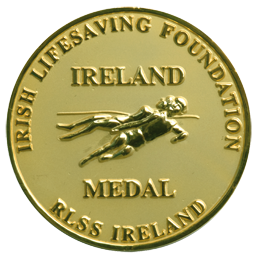
The first medal was awarded to Ireland’s police force, An Garda Síochána, in recognition of the thousands of swimming rescues carried out by its officers since 1922. The medal was presented to then Commissioner Noel Conroy by Ireland’s Taoiseach (Prime Minister) Bertie Ahern, TD.

In 2016 a revised second version of the medal was introduced sponsored by the Hogan family in memory of their grandfather James Hogan, and his brothers Thomas and John, who between them saved over 50 persons from drowning in the River Barrow as it flows through New Ross, Co. Wexford, in the first quarter of the 20th century.
The medal was accompanied by a hand drawn parchment which was produced by Réiltín MurphyFrom 2019 onwards the medal has been accompanied by a piece of Waterford Crystal which provides a symbol of the medal which can be displayed at the recipients' discression.
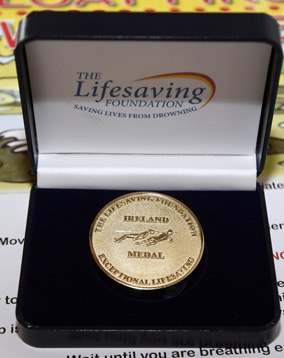
The medal has no intrinsic value itself but today it is recognised as one of the world’s major lifesaving awards thanks to the exceptionally high quality of its recipients.
 ____________________________________________________________________________________________
____________________________________________________________________________________________
2003: An Garda Síochána (Ireland)

The 2003 Ireland Medal was awarded to Ireland's police force, An Garda Síochána. An Garda Síochána (Ireland’s Police Force) was founded in 1922. It appears to have been taken for granted by government and the public that police officers could be called upon to rescue persons from drowning, as part of their normal duties, and therefore swimming and rescue instruction was part of the recruit training programme. Late 20th century research has established that members of An Garda Síochána are often first responders to drowning incidents. Approximately 20 officers enter deep water annually to make swimming rescues, often in extremely difficult circumstances. The majority of those rescued had deliberately entered the water, are young males, and have been drinking beforehand. Gardaí usually work in teams, swim in uniform, often displaying great courage and commitment to saving a life. It is estimated that around 2000 persons have been rescued since 1922.
 ____________________________________________________________________________________________
____________________________________________________________________________________________
2004: Frank Golden OBE MD PhD (UK)

Surgeon Admiral Frank Golden OBE MD PhD was born and educated in Cork City, Ireland, receiving his medical doctorate from the National University of Ireland (UCC) in 1960. He joined the Royal Navy as a medical officer retiring in 1993 with the rank of Rear Admiral. He received a PhD in 1979 from the University of Leeds for his work on the early rewarming of hypothermic casualties. During his naval career he directed the Royal Navy’s survival medical research department. He was a consultant advisor in human and applied physiology at the University of Portsmouth and the Royal National Lifeboat Institute (RNLI) being chairman of its Medical and Survival Committee. He wrote many articles on hypothermia and survival in water, most recently authoring the book Essentials of Sea Survival (2002) in conjunction with his University of Portsmouth colleague Professor Michael Tipton. Frank Golden died on 5th January 2014.
 ____________________________________________________________________________________________
____________________________________________________________________________________________
2005: John Pearn (Australia)

Major General Professor John Pearn AO GCStJ RFD MD PhD DSc FRACP is Professor of Paediatrics at the University of Queensland, based in the Royal Children’s Hospital, Brisbane. A former Surgeon General of the Australian Defence Force, he commanded the Health Service Branches of the Royal Australian Navy, Air Force and the Army from 1997 to 2000. During his military career he saw operational service in Papua New Guinea, in the Vietnam War, in post-genocide Rwanda and in post-tsunami Sumatra. He served as National Director of Training for St. John Ambulance Australia from 1989 to 1999 and was Editor – in – Chief of the manual Australian First Aid. In 1974 he instituted the Brisbane Drowning Study to address the serious problem of toddler drownings in Australia. He has published numerous articles and book chapters on drowning related topics in international medical literature. He is a member of the ILS Medical Commission.
 ____________________________________________________________________________________________
____________________________________________________________________________________________
2006: Eamonn Doherty (Ireland)
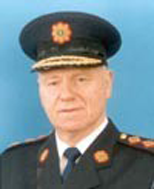
Eamonn Doherty joined An Gárda Síochána in 1943 rising through the ranks to the position of Gárda Commissioner. In retirement he represented Ireland on a European anti-drugs task force and chaired an independent arbitration panel overseeing the drinks industry’s code of practice and was patron of The Irish Athletic Boxing Association. As President of the Gárda Training College he introduced lifesaving into the curriculum of all Gárda trainees. He was appointed chairperson of the Royal Life Saving Society’s Ireland Region (overseeing the activities of the RLSS Republic of Ireland and Northern Ireland Branches) in the early 1980’s and continued in this role until the early 1990’s. He chaired the Irish Marine Gallantry and Meritorious Service Award body. Eamonn chaired of The Doherty Commission which studied Ireland’s Air Sea Rescue Service, producing the Doherty Report which led to the transfer of this rescue service from the Irish Air Corp to The Irish Coast Guard and the stationing of rescue helicopters at a number of regional airports in place of the previously Dublin centralised rescue service.
 ____________________________________________________________________________________________
____________________________________________________________________________________________
2007: Foyle Search & Rescue (Northern Ireland)

Foyle Search and Rescue (FSR) was founded in 1993 in response to the large number of persons successfully completing suicide by drowning in the River Foyle, Co. Londonderry, Between 1993 – 2006 FSR helped more than 1000 persons in distress in or near the river. Working with about 40 key volunteers FSR provides 24 hour / 7 day pager response coverage of the River Foyle, River Faughan and waterways around Strabane. Members patrol the river walkways and two bridges over the Foyle between 9pm and 3am, with a fully crewed rescue boat on the river, on Thursday, Friday and Saturday nights. The Londonderry Sentinal reported in July 2007; “Foyle Search and Rescue emergency response team volunteers have been called out 25 times in 2007 and have recovered three bodies, rescued six people from the river, assisted in taking a further six people back to safety from the water’s edge and rescued four people on board a boat. They have attended a further nine incidents which did not need any further assistance.”
 ____________________________________________________________________________________________
____________________________________________________________________________________________
2008: The Hon. Terence Higgins AO QC (Australia)
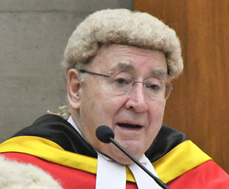
The Honourable Terence Higgins AO QC was appointed Chief Justice of the Supreme Court of the Australian Capital Territory in 2003. He has been President of the Royal Life Saving Australia ACT Branch since 1993, has served as National President of RLSSA (1997 – 2003), after which he served as RLSSA’s International Development Liaison Officer. He has been Legal Advisor to RLSSA since 1993. During his first term as National President of the Royal Life Saving Society Australia he presided over a time of unprecedented growth with one million Australians taking part in RLSSA courses annually. He oversaw the development of national sponsorship and fundraising programmes and implemented significant changes to the governance structures of RLSSA which ensured that RLSSA was a driving force in the development and implementation of the Australian Water Safety Plan 1998 – 2003. In 2003 he was elected as the International Life Saving (ILS) Asia Pacific Regional Development Co-ordinator and interim chair of the ILS Development Aid Commission (2003 – 2004).
 ____________________________________________________________________________________________
____________________________________________________________________________________________
2009: Dublin Fire Brigade (Ireland)

In addition to providing a 365 day fire, rescue and ambulance service, Dublin Fire Brigade also has water rescue units based at three locations throughout Dublin City. Rescue boats are moored on the River Liffey close to Tara Street Fire Station and all front line fire engines carry two dry suits for use in water rescue situations. The brigade has 70 fully trained rescue boat crew, 300 Swift Water Rescue Technicians and over 1000 Swift Water First Responders. All are volunteers and do not receive extra salary for holding water rescue qualifications. Dublin Fire Brigade responds to approximately 145,000 emergency calls annually. The crews responding to call-outs are fully trained to deal with a fire, ambulance and water rescue situations. In the 10 years since the water rescue units were established fire fighters in Dublin have attended over 2000 water related incidents and over 1000 persons have been rescued from drowning.
 ____________________________________________________________________________________________
____________________________________________________________________________________________
2010: Patricia Wilcox (South Africa)
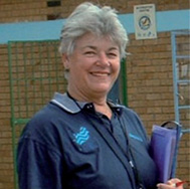
Mrs. Patricia Wilcox’s qualified as a Swimming Teacher in 1975, Lifesaving Instructor in 1989 and Lifesaving Examiner in 1990. Shortly afterwards she began working in Soweto as a volunteer teacher and examiner. “Things were quite volatile in Soweto. Travel was not easy. Road signs had been removed and general lighting was by high security lights. A lifeguard would meet us at the hospital and take us to the pool. This first visit was quite an eye opener for me as I had never been to a ‘township’ before. Europeans were still discouraged from going in. I encountered shock and fear for my safety by most people who became aware of what I was doing.” She became aware that there were full and part-time jobs for qualified lifeguards in Johannesburg and began focusing more of her training towards achieving this goal for her ‘youngsters’. She has trained hundreds of young unemployed swimmers as lifeguards thereby giving them a job and a position of status, as lifeguards are considered valuable members of the South African community.
 ____________________________________________________________________________________________
____________________________________________________________________________________________
2011: Linda Quan (United States of America)
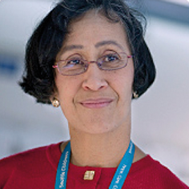
Linda Quan is a pediatric emergency medicine physician at Seattle Children’s Hospital and Regional Medical Center and a professor in the University of Washington’s Department of Pediatrics (Center for Child Health, Behavior and Development). Dr. Quan has been involved in research and guidelines at a national and international level in pediatric resuscitation, emergency medical services and drowning.
She was chief of emergency services at Seattle Children’s Hospital for more than two decades. Dr. Quan is board certified by the American Board of Pediatrics in emergency medicine. She has served on many committees for the American Academy of Pediatrics, American Heart Association, Emergency Medical Services for Children (EMS-C), CDC Injury Prevention, and recently for the American Red Cross. She has spent a large part of her career on research of drowning, drowning prevention, and pediatric resuscitation for which she has received many biomedical grants. She has received numerous awards and has an extensive bibliography.
She first became interested in drowning prevention when she was a resident in the emergency department at Harborview Medical Center. A 3-year-old girl who fell into an apartment pool was brought to emergency after being revived at the scene. Linda wondered two things — how did the girl survive, but also, why did she fall into the pool in the first place?
That was more than 30 years ago and she has focused on water safety ever since. She and longtime collaborator Elizabeth Bennett combine research, outreach and advocacy to stop drowning. Their efforts to understand the problems and find solutions have made them widely recognized leaders in drowning prevention, with a special emphasis on open water such as lakes and rivers.
Drowning in open water is a particular danger in Washington State and other places that have easy access to open water — especially among teenagers. Quan and Bennett’s research helped define the problem by showing that in King County, teens 15 to 19 were at greater risk of drowning than any age group besides preschoolers, and that drowning in lakes and rivers posed the greatest risk to those teens.
In 2009, the Centers for Disease Control and Prevention awarded Seattle Children’s Hospital, in partnership with the Washington State Department of Health, a grant to create a policy plan for open-water drowning prevention for children and teens in Washington state. In addition, Linda Quan and Elizabeth Bennett are co-chairing an international task force that’s developing open-water drowning prevention messages for use throughout the world.
In every case, research drives the strategies they develop and share through local, national and international partnerships. “The reasons a 4-year-old drowns are different than the reasons a 14-year-old drowns,” says Elizabeth. “You have to tailor your message according to the developmental level of the child as well as the knowledge, beliefs and behaviors of their parents.”
For example, a study based on statistics from the state’s Department of Health showed a higher rate of drowning among Asian children than African-Americans and whites. Linda and Elizabeth conducted focus groups with Vietnamese teens and parents — all immigrants — to explore the reasons. They discovered a strong belief among Vietnamese that drowning was attributable to fate, but they also learned that providing information about water safety and offering low-cost courses on water skills in Vietnamese might make a difference.
They have approached drowning prevention from a variety of angles, studying how best to collect drowning data, helping pass a state law requiring children younger than 13 to wear life jackets in small boats, and assisting local, national and international organizations such as the American Red Cross, U.S. Army Corps of Engineers, the National Park Service and the National Safe Boating Council with their drowning prevention strategies.
Swimming pools are where people learn how to be safe in water environments say drowning experts Dr. Linda Quan (left)
and Elizabeth Bennett.
“We’re passionate about drowning prevention because these deaths are so preventable,” says Linda Quan.
http://www.seattlechildrens.org/medical-staff/linda-quan/
http://www.seattlechildrens.org/healthcare-professionals/aar/2009/highlights/research-passion-prevention/
 ____________________________________________________________________________________________
____________________________________________________________________________________________
2012: John Connolly (Ireland)
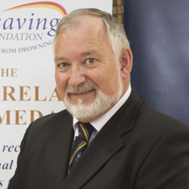
John Connolly is a retired Primary School Principal Teacher. He joined the RLSS in 1973 and founded Waterford Lifeguard Club to provide RLSS lifesaving and lifeguard training. The club ceased operating in 2005 by which time over 10,000 adults and children had been taught to swim and over 1000 senior lifesaving awards received. Using his position as the local teachers’ trade union representative he organised swimming instruction in schools. He established beach lifeguard services at Dunmore East and Bonmahon, Co. Waterford. He was elected to the RLSS IRELAND Branch Management Committee in 1976 serving in a number of roles including Branch President (2 terms) and Branch Secretary (5 terms). In 2003 he founded the Irish Lifesaving Foundation charity. He has regularly contributed to conferences presenting papers at various World Drowning Prevention Conferences. In 2009 he organised the first Lifesaving Foundation Drowning Prevention Conference which has continued since then. He has authored a number of drowning prevention documents.
 ____________________________________________________________________________________________
____________________________________________________________________________________________
2013: Stephen Langendorfer (United States of America)

 ____________________________________________________________________________________________
____________________________________________________________________________________________
2014: Kevin Moran (New Zealand & UK)
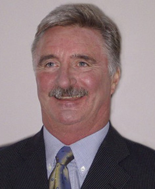
Dr Kevin Moran ONZM PhD has displayed long outstanding leadership and dedication to water safety and lifesaving involving his membership of International Life Saving’s Research and Information Committee; Co-chairing the International Task Force on Open Water Drowning Prevention; he was a founding member of the New Zealand Drowning Prevention Council and WaterSafe Auckland, which he chaired for a number of years. He has been a frontline surf lifeguard for almost 50 years. Currently he is a Principal Lecturer in Health and Physical Education in the School of Curriculum and Pedagogy at the Faculty of Education, University of Auckland. His doctoral thesis is titled Re-thinking drowning risk: the role of water safety knowledge, attitudes and behaviours in the aquatic recreation of New Zealand youth. Recent publications include studies on toddler parent perceptions of CPR and drowning prevention, parental supervision of children at beaches, lifeguard CPR knowledge and beliefs, rock fisher water safety, defining swimming ability in the context of drowning prevention, and high risk behaviours among youth around water.
 ____________________________________________________________________________________________
____________________________________________________________________________________________
2015: John Long (United Kingdom) International Medal

Chief Superintendent (Rtd) John Long has lifesaving experience from local club level to international level. Between 1957 and 1991 he was a police officer rising to the rank of Chief Superintendent. He held RLSS posts as Trainer/Assessor, Treasurer, Secretary and Chairman in two different UK Branches. He has been President of the Warwick Life Saving Club since its formation in 1982 and was Chairman of the RLSS UK West Midlands Region between 2001 and 2011. In 2013 John was appointed President of The RLSS UK Warwickshire Branch. He was Commonwealth Secretary of the RLSS between 1992 – 2010; an Observer on the Board of the International Life Saving Federation (ILS) from 1994 until 2005; and Secretary to the ILS Development Commission between 1992 and 2005. Since 2008 he has been Patron of the Rashtriya Life Saving Society of India having been one of the prime movers in the establishment of the organisation in 1999. On 12th April 2012 John received the King Edward VII Cup from HM Queen Elizabeth II during a private audience at Windsor Castle.
 ____________________________________________________________________________________________
____________________________________________________________________________________________
2016 Brendan Donohoe (Ireland) Individual Medal

Brendan Donohoe has been awarded the 2016 Individual Ireland Medal in recognition of 50 years of continuous exceptional service to saving lives from drowning as a lifeguard, a lifesaving teacher, a lifeguard trainer/assessor and as a lifesaving administrator. Joining the RLSS in the 1960’s Brendan served on the Ireland Branch executive as Branch Membership Secretary, Branch Technical Officer, Branch Chief Examiner, four terms as Branch President, and be elected to the RLSS UK National Executive Board representing the Republic of Ireland and Northern Ireland Branches as Ireland Region member. On 20th June 2016 his RLSS Monkstown Lifesaving Club celebrated its 40th birthday. Brendan can usually be found on Thursday nights in the Blue Pool Monkstown teaching lifesaving or training lifeguards. He was a founding member of the Irish Lifesaving Foundation and from 2010 has been Chairperson of the restructured Lifesaving Foundation. In this role he has supported the provision of financial and technical aid to lifesaving groups in developing countries visiting Africa twice.
 ____________________________________________________________________________________________
____________________________________________________________________________________________
2016 The Naval Service (Ireland)
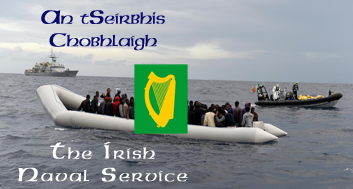
The 2016 Ireland Medal was awarded to The Irish Naval Service in recognition of its permanent role as on-scene coordinator in deep sea Search and Rescue (SAR) lifesaving operations and its recent humanitarian rescuer role in the Mediterranean Sea. The Irish Government decided to send naval ships to the Mediterranean as part of the European Union refugee response. In May 2015 LÉ Eithne entered the Mediterranean and took up station off the coast of North Africa where over 8 weeks they saved 3,376 migrants. The LÉ Niamh replaced LÉ Eithne in July 2015 on a three month mission rescuing more than 4,100 people. In October 2015 LÉ Samuel Beckett replaced LÉ Eithne and by the end of 2015 over 8,000 migrants had been rescued from drowning by Irish Naval Service ships. LÉ Róisín was deployed to the Mediterranean on 01 May 2016 and rescue a total of 1,264 people. LÉ James Joyce, replaced LÉ Róisín in July with LÉ Samuel Beckett taking over at the end of September. By October 2016 over 10,000 persons had been rescued from drowning in the Mediterranean.
 ____________________________________________________________________________________________
____________________________________________________________________________________________
2017 Shayne Baker (Australia)
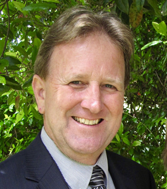
 ____________________________________________________________________________________________
____________________________________________________________________________________________
2018: Joost Bierens (Netherlands) International Medal

Professor Joost Bierens of the Netherlands name is linked with some of the greatest contemporary achievements in world lifesaving. His first experience with water safety was working as a beach lifeguard during medical school vacations (1974 to 1980) when he became interested in aquatic emergencies and water safety. In 1996, he completed his PhD thesis: “Drowning in the Netherlands, Pathophysiology, Epidemiology and Clinical Studies”. He was the coordinating editor of “The Handbook on Drowning, Prevention, Rescue and Treatment” (2006) which contained papers from 179 contributors from over 40 countries and its successor ‘Drowning’ (2014). He has published over 150 scientific peer-reviewed articles and chapters on lifeguarding, drowning, hypothermia and water safety. He was appointed the first Professor in Emergency Medicine in the Netherlands at the Department of Anaesthesiology of the VU University Medical Center until his term ended in 2009. Since 2015 he is the visiting professor at the Department of Emergency Medicine of the Vrije Uniiversiteit Brussels and thesis coordinator of the European Masters in Disaster Medicine.
 ____________________________________________________________________________________________
____________________________________________________________________________________________
2019: Prof. Michael Tipton MBE, PhD (United Kingdom)

Professor Michael Tipton MBE has had a long involvement in saving lives from drowning worldwide. In addition to his survival research Mike is a Trustee and Director of Surf Lifesaving GB (SLSGB) and recently completed 10 years on the Royal National Lifeboat Institution’s (RNLI) Medical & Survival Committee and is a member of the Council of RNLI. He provides technical input on the physiological responses associated with immersion-related deaths and the prevention, rescue, and treatment of immersion casualties. In recognition of his contribution to SLSGB, he was awarded life membership earlier this year. He was made Honorary Life Member of the International Association for Safety & Survival Training in 2004. Mike is also a member of the medical committee of the Society for Anhidrotic Ectodermal Dysplasia; a member of the Maritime Coastguard Agency’s Immersion Casualty Review panel; and a co-founder of the International Drowning Researcher’s Alliance. Mike’s maternal ancestor Timothy Cavanagh emigrated from Ireland to Bristol, England. He is married to Carole, they have two grown up children, Sam and Jenny.
 ____________________________________________________________________________________________
____________________________________________________________________________________________
2020: Dr. Patrick Morgan, MD (United Kingdom)
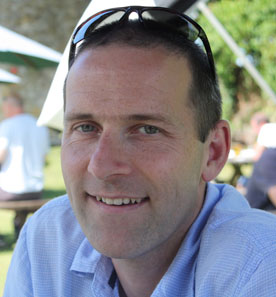
Doctor Patrick Morgan BSc (Hons), MB ChB, Dip IMC, RCSEd, FRGS, PGC(Med)E, FHEA, FRCA, FFICM. is a consultant anaesthetist at Southmead Hospital, North Bristol NHS Trust, United Kingdom specialising in anaesthesia for orthopaedic trauma, spinal surgery, and neurosurgery. He is also a Trauma Team Leader in this Major Trauma Centre, leading the multi-disciplinary team upon the arrival of a major trauma patient at the hospital and is actively involved at a Network level delivering training in anaesthesia and team leadership/ membership for Major Trauma.
 ____________________________________________________________________________________________
____________________________________________________________________________________________
2021: Dr. David Szpilman, MD (Brazil)

Brazilian medical doctor David Szpilman graduated in medicine in 1982. He worked from 1990 to 2010, as an emergency doctor alongside lifeguards at the Drowning Resuscitation Centre (Fire Department of Rio de Janeiro). The centre is a pre-hospital emergency facility at the Rio de Janeiro Beaches. It was specially developed in the 1960s to deal with aquatic emergencies at beaches including the city's two famous beaches, Copacabana, and Ipanema. He was Head at the Adult Intensive Care Unit for 12 years at the Municipal Miguel Couto Hospital. Working in this specialist trauma hospital allows him to follow up on all drowning occurrences from pre-hospital to hospital care. He is a medical advisor to the Civil Defence in Rio de Janeiro.
He is the founder and former President and Medical Director of the Brazilian Life Saving Society (SOBRASA). He is currently its General Secretary. He is a member of the Brazilian National Resuscitation Council and of the Medical and Prevention Commission of the International Life Saving Federation (ILS). He is the author of 4 books (including Drowning and Resuscitation Techniques, & Marine Bites), 98 book chapters, and 223 published papers in national and international medical literature, along with more than 800 drowning lectures at national and international conferences.
 ____________________________________________________________________________________________
____________________________________________________________________________________________
2022: Elizabeth Bennett, MPH, MCHES (USA).
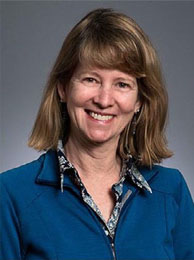
Tizzy has been a public health leader for over 40 years. She has a Master’s in Public Health and is a Master Certified Health Education Specialist. Tizzy has made significant contributions in paediatric injury prevention research, education, and advocacy during her 38 year career at Seattle Children’s Hospital. She is a factor behind Washington State’s national recognition as a leader in drowning prevention by partnering with organizations throughout the State to keep families safe in and around water, researching what factors lead to child and teen drownings, and developing effective programs to increase protective factors such as the use of life jackets. One example is the launch of the first life jacket loaner station in the United States-there are now thousands across the country. She helped establish the Washington State Drowning Prevention Network in 1994 and co-led it until 2020. Additionally, Tizzy co-authored nearly 50 publications in the areas of drowning prevention, health education and diversity, child passenger safety, safe firearm storage, and hand hygiene. She consistently exemplifies integrity, excellence, and compassion in her work, and strives for cultural humility and inclusivity.
Tizzy uses evidence-based methods to prevent drowning deaths and promote safety. For her MPH thesis research, Tizzy conducted an evaluation of a drowning prevention campaign in King County, Washington, and the resultant publication is seminal and a highly cited work in this critical yet still understudied field. She co-authored numerous influential publications on drowning prevention including Everyone Swims, a policy and systems change strategy to promote swimming and water recreation. She developed the first comprehensive open water drowning prevention campaign in the U.S. and collaborated internationally to develop consensus based messages for Open Water Recreational Safety and to serve as co-editor of the Prevention Section for the 2nd edition of the Drowning Prevention Handbook.
Tizzy’s final role at Seattle Children’s Hospital was as Director of Community Health and Engagement. She has been a Health Services Clinical Instructor at the University of Washington since 1999 and currently co-leads the Life Jacket/PFD/Other Flotation Working Group for the first U.S. National Water Safety Action Plan. Throughout her career, she has worked closely with and been mentored by Dr Linda Quan recipient of the 2011 Ireland Medal as well as many of the other Medal recipients. In 2020, Tizzy was recipient of Washington State Public Health Association’s Public Health Leadership Award.
 ____________________________________________________________________________________________
____________________________________________________________________________________________

